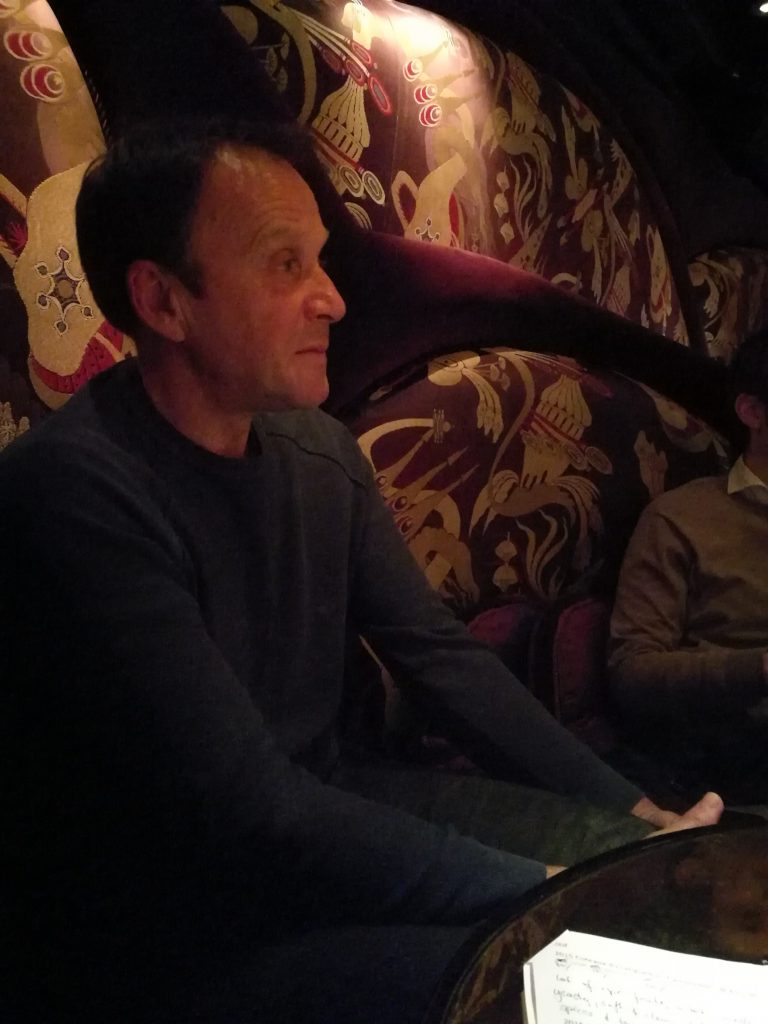The Alan Chabanon Winery, which is tucked away in the charming Languedoc area of Southern France, is a monument to the innovative yet deeply traditional craft of winemaking. The history of Alan Chabanon Winery is one of fervour, tenacity, and an unwavering quest for viticultural greatness.
Domaine Alain Chabanon
34725 Jonquières, France | +33 4 67 96 60 78
domaine@alainchabanon.com | www.alainchabanon.com |
Masterclass with Alan Chabanon @ Park Chinois | Tags
The ardent oenologist Alan Chabanon chose to start his winemaking endeavours in the early 1990s, which is when the Alan Chabanon Winery got its start. Having finished his oenology studies and gained invaluable experience working in several well-known wineries, Chabanon developed a strong bond with the Languedoc region. He saw that its varied terroirs and temperate climate offered everything needed to produce wines of great quality.
A little plot of land in Montpeyroux, a community renowned for its long tradition of winemaking, was purchased by Chabanon in 1992. He founded his name-brand winery with unflinching will and a clear vision, laying the groundwork for a legacy that would develop over the ensuing few decades.
Alan Chabanon’s winemaking philosophy was founded on a deep reverence for the land and a dedication to sustainable methods from the outset. He committed himself to carefully tending his grapes because he thought that great wine starts in the vineyard. Chabanon made sure his vines flourished in balance with the environment by using organic and biodynamic agricultural techniques.
The Mediterranean environment and diverse soils of the Languedoc region made Chabanon’s wine creations an ideal fit. He took great care to choose grape varietals that would highlight the distinctive qualities of each plot. His vines became home to varietals like Syrah, Mourvèdre, Grenache, and Vermentino, all of which added character to his wines.
Alan Chabanon approached all facets of winemaking with an unwavering commitment to quality. He made expressive and sophisticated wines in the cellar by combining conventional methods with cutting-edge advancements. The process of fermentation was precisely regulated because it was carried out in compact stainless steel vats with temperature control. The wines were aged in French oak barrels, where they gained depth and character.

Chabanon used a minimally interventionist approach to winemaking. He felt that the terroir and the grapes’ inherent qualities should be highlighted. This way of thinking produced wines that were authentic representations of their place of origin, with each bottle serving as a narrative about the region it originated in.
Red grape varieties include
Syrah: which is prized for its intense colour and fruity, peppery flavour.
Mourvèdre: With its deep, meaty, earthy flavours, this wine adds complexity and structure.
Grenache: Red berry flavours and fruitiness are contributed by this grape variety to the wine.
Cinsault: Often used to balance the blend, it adds elegance and freshness.
White Grape Varietals
Vermentino: Contributes lively acidity and fragrant hints of herbs and lemon.
Roussanne: With notes of honey and stone fruits, it adds richness and depth.
Marsanne: Offers weight and complexity, with melon and nutty undertones.
The Alan Chabanon Winery has received praise from both critics and wine fans over the years. His wines have always gotten great reviews for their harmony, elegance, and ageability. Chabanon’s reputation as one of the top winemakers in the Languedoc region was cemented when his commitment to quality was acknowledged with multiple honours and recognitions.
The Alan Chabanon Winery is still owned by the Chabanon family today, and Chabanon’s offspring are carrying on his heritage. The winery has remained faithful to the values that Alan Chabanon established decades ago even as it has modernised its buildings and grown its vineyards. The wines continue to enchant palates all around the world, and the dedication to organic and biodynamic agricultural methods never wavers.